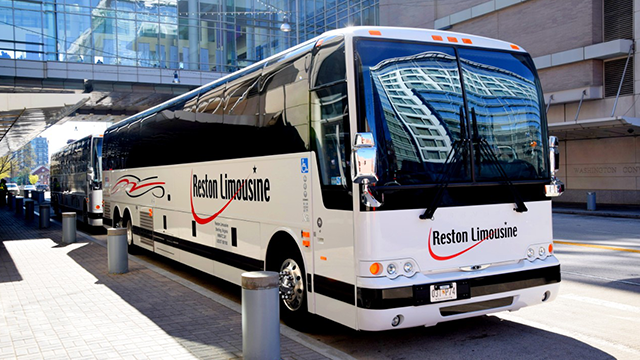Here are ten tips on how to schedule and be flexible with employee shuttle service.
1. Examining the needs of employees
Assess the requirements of your employees in terms of their schedule. This could be done via surveys or discussion groups to collect data on employees' preferences for time for their shuttles as well as their shift patterns and any other requirements specific to them. Understanding your employees' diverse requirements is essential to create a schedules that accommodate as many employees as is possible.
2. Implement a Flexible Scheduling Systems
Create a flexible schedule that allows adjustments to be made based upon employee needs. Think about offering shuttles at different hours of the day to allow for different schedules and schedules. It is possible to provide shuttles in the morning hours to first-shift employees and mid-day shuttles for flexible schedule employees, and late-night shuttles for third- or second-shift staff.
3. Make use of real-time data for adjustments
Incorporate technology that provides live data on employee ridership and patterns of traffic. This information can assist you make educated decisions about when to add new routes or alter the times of shuttles. You can optimize scheduling by looking at usage data.
4. How do I set up an Reservations System
You might consider implementing a reservation system for shuttle services. This will allow employees to reserve their seats ahead of time, ensuring that there is enough capacity to accommodate demand. A reservation software will aid in identifying peak travel times, and then alter your schedule in line with the peak times.
5. Communication Schedule Changes that Work
Ensure that any changes to the shuttle schedule are made clear and swiftly to everyone in the company. Use multiple channels of communication like email, intranets, or mobile apps, to inform employees of any changes. Clear communication helps to avoid confusion and allows employees to plan their commutes accordingly.
6. Monitor Peak Usage Time
Check the use of the shuttle to identify peak times. You can use the information to alter your schedule to ensure that you can have more shuttles in operation during busy times. You can improve the efficiency of services and decrease employee wait times by proactively managing the peak use.
7. On-Demand Service Offer
Consider the possibility of offering on-demand shuttle services for employees with varying schedules. This could mean making use of apps that allow employees to request an appointment for a shuttle when they need it. On-demand service may improve flexibility and help employees who work irregular hours.
8. Consider Hybrid Models
Hybrid scheduling models mix fixed routes and flexible options. For instance, you could plan routes for peak times, but also allow for an option for flexible pickups and drop-offs non-peak times. This will allow you to increase your efficiency, while still accommodating employee schedules.
9. Feedback is crucial for continual improvement
Encourage employees to give feedback regarding the shuttle schedule and the overall experience of transportation. This feedback can be used to identify improvements and to adjust the schedule. The involvement of employees in the shuttle service process could foster a sense ownership, and can lead to more effective outcomes.
10. Seasonal changes: Examine these changes and modify to them
Be aware of any seasonal shifts in employee schedules. For instance, shifts in holiday hours, vacations during summer, or work hours. Always review and update the schedule of shuttles to adapt to changes in employee availability. Flexibility during these times can help to maintain high participation levels.
Implementing these strategies will help organizations develop a flexible and efficient scheduling system for shuttles for employees making sure that the service is able to meet the varied needs of the workforce while increasing satisfaction and efficiency. Follow the most popular employee transportation for website tips including lax to anaheim shuttles, service shuttle, shuttle for the airport, airport shuttle to airport, miami transportation services, pickup from lax, airport shuttle pickup at home, dallas airport shuttle, transportation private, los angeles airport transportation and more.

Tips On Capacity Of Vehicles And The Options For A Company Transport Services
Here are 10 top ideas for capacity and the vehicle options for an enterprise transportation service.
1. Evaluate Event Attendance Estimates
Estimate the number of attendees who will attend the event. This can be done using registration data, RSVPs or attendance records. Understanding the expected number of attendees will determine the capacity required for transportation and enable better planning of the vehicle options.
2. The right vehicle types
Choose the best vehicle according to the expected number of guests and the type of event. Consider using buses or vans that can transport many passengers. The most luxurious vans or sedans are ideal for smaller groups as well as VIPs. A variety of vehicle options can ensure that attendees can be transported comfortably.
3. Consider accessibility requirements
Make sure that all participants, including those with disability are able to access the vehicle. This can include choosing cars with wheelchair lifts or with low-entry. Inclusion in transportation is not just in line to legal requirements, but it also improves the overall experience of everyone who participates.
4. Make sure you have multiple pick-up locations planned.
If participants are from different locations, make plans for several pickup points in order to make transport easier. It may be a central spot like a hotel, airport, or even a public transportation hub. The best way to increase attendance is by allowing multiple pickup points and reduce logistical issues.
5. Set up the Reservation System
You should consider implementing a reservation system to book transportation. This lets attendees book their seats ahead of time to ensure that vehicles are full and reduces the possibility of a crowded vehicle. Reservation systems can be utilized to alter capacity based on the actual demand.
6. Choose the most efficient routes
Choose the most efficient routes to ensure you get to and from your destination in time. Evaluate potential bottlenecks as well as traffic patterns to design the best route for vehicles. Utilizing route optimization could reduce travel time while identifying the best routes.
7. Providing On-Demand Transport Services
For large events, offer transport on demand. Participants will be in a position to book the bus at their preference. This can be especially helpful during events that last for more than a few days or have various time slots. On-demand services allow for greater flexibility and provide attendees with transportation anytime they require.
8. Monitor Vehicle Capacity Utilization
Keep track of the utilization of vehicles during the event. The ability to monitor how many seats are empty can assist in making quick changes, like the deployment of additional vehicles if certain shuttles are booked out. The analysis of data collected after the event will help in future planing.
9. Communicate Transportation Information Clearly
Communicate clearly transportation details well before the event. Inform attendees about the pickup location, schedules, and the types of vehicles. Use of multiple communication channels (emails or event apps, printed materials) can ensure attendees are informed of their transport options.
10. Use feedback to improve future Services
Gather feedback from the guests on their travel experience following the event. This could be as simple as vehicle comfort, timeliness, and general satisfaction. Examining this feedback will give insights into what worked well and what could be enhanced for future corporate events. This will allow for better capacity and vehicle planning.
These guidelines will help companies to manage their resources and choose the right vehicle for their corporate event transportation services. This will ensure that guests have an enjoyable and seamless experience. A well-planned and executed plan for the event can contribute to its overall success, as well as an overall positive impression of the company. Read the most popular event transportation hints for blog examples including transportation and logistics services, safe transportation, logistics transportation, trucking services near me, reliable transportation, logistics web, companies that transport, transportation solutions, logistics company near me, vehicle transport service and more.
